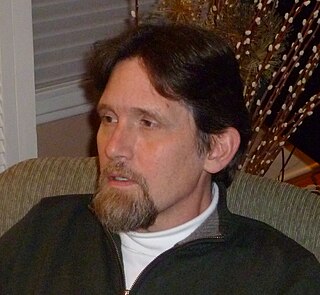Related Research Articles

Anthropology is the scientific study of humans, human behavior and societies in the past and present. Social anthropology studies patterns of behaviour and cultural anthropology studies cultural meaning, including norms and values. Linguistic anthropology studies how language influences social life. Biological or physical anthropology studies the biological development of humans.
Artifact, or artefact, may refer to:
Prehistoric archaeology is the study of the past before historical records began. It is a field of research that looks at all the pre-urban societies of the world. It also has distinctive set of procedures for analysing material remains so that archaeologists can reconstruct their ecological settings. The study of prehistoric archaeology reflects the cultural concerns of modern society by showing interpretations of time between economic growth and political stability. It also has very close links with biology, biological anthropology, and geology. It is also sometimes termed as anthropological archaeology because of its indirect traces with complex patterns.

Material culture is the aspect of social reality grounded in the objects and architecture that surround people. It includes the usage, consumption, creation, and trade of objects as well as the behaviors, norms, and rituals that the objects create or take part in. Some scholars also include other intangible phenomena that include sound, smell and events, while some even consider language and media as part of it. The term is most commonly used in archaeological and anthropological studies, to define material or artifacts as they are understood in relation to specific cultural and historic contexts, communities, and belief systems. Material cultural can be described as any object that humans use to survive, define social relationships, represent facets of identity, or benefit peoples' state of mind, social, or economic standing.
The term bioarchaeology was first coined by British archaeologist Grahame Clark in 1972 as a reference to zooarchaeology, or the study of animal bones from archaeological sites. Redefined in 1977 by Jane Buikstra, bioarchaeology in the United States now refers to the scientific study of human remains from archaeological sites, a discipline known in other countries as osteoarchaeology or palaeo-osteology. In England and other European countries, the term 'bioarchaeology' is borrowed to cover all biological remains from sites.

Kurī is the Māori name for the extinct Polynesian dog. It was introduced to New Zealand by the Polynesian ancestors of the Māori during their migration from East Polynesia in the 13th century AD. According to Māori tradition, the demigod Māui transformed his brother-in-law Irawaru into the first dog.
Public anthropology, according to Robert Borofsky, a professor at Hawaii Pacific University, "demonstrates the ability of anthropology and anthropologists to effectively address problems beyond the discipline—illuminating larger social issues of our times as well as encouraging broad, public conversations about them with the explicit goal of fostering social change". The work of Partners In Health is one illustration of using anthropological methods and data to solve big or complicated problems.
Archaeology, or archeology, is the study of human activity through the recovery and analysis of material culture. The archaeological record consists of artifacts, architecture, biofacts or ecofacts and cultural landscapes. Archaeology can be considered both a social science and a branch of the humanities. In Europe it is often viewed as either a discipline in its own right or a sub-field of other disciplines, while in North America archaeology is a sub-field of anthropology.

The Faculty of Human, Social, and Political Science at the University of Cambridge was created in 2011 out of a merger of the Faculty of Archaeology and Anthropology and the Faculty of Politics, Psychology, Sociology and International Studies. According to the Cambridge HSPS website: graduates pursue careers in "research, the Civil Service, journalism, management consultancy, museums, conservation and heritage management, national and international NGOs and development agencies, the Law, teaching, publishing, health management, and public relations."

The Colombian Institute of Anthropology and History, ICANH, is a scientific and technical government agency ascribed to the Ministry of Culture in charge of researching, producing and disseminating knowledge in the fields of anthropology, archeology and colonial history to protect the archaeological and ethnographic patrimony of Colombia.
The Archaeological and Anthropological Society of Victoria or AASV is an incorporated association formed in 1976 in Melbourne, Australia through the amalgamation of two earlier societies, the Anthropological Society of Victoria formed in 1934, and the Archaeological Society of Victoria formed in 1964. The former was created from the efforts of gifted lecturer Frederic Wood Jones who attracted an enthusiastic non-academic audience to his public lectures in the 1930s. The latter was created in response to the Centre for Adult Education (CAE) archaeology lectures of University of Melbourne academic William (Bill) Culican. The AASV publishes the occasional journal The Artefact.
Gary Presland is an Australian archaeologist and writer who studied history at La Trobe University 1973-76, and archaeology at the University of London, 1977-79. He was a staff member of the Victoria Archaeological Survey from 1983 to April 1988; his research interests are in the Aboriginal and natural history of Melbourne. One important contribution was the transcription and editing of the unpublished journals of George Augustus Robinson, Chief Protector of Aborigines in the Port Phillip District, 1839-1849. He was awarded the degree of Doctor of Philosophy at the University of Melbourne in 2005, for his reconstruction of the pre-European natural history of Melbourne.
The archaeology of religion and ritual is a growing field of study within archaeology that applies ideas from religious studies, theory and methods, anthropological theory, and archaeological and historical methods and theories to the study of religion and ritual in past human societies from a material perspective.
The Archaeological Society of Victoria was formed in 1964 from the efforts of University of Melbourne academic William (Bill) Culican in response to the enthusiastic response to his archaeology lectures run through the CAE. In 1976 it combined with the Anthropological Society of Victoria to create the Archaeological and Anthropological Society of Victoria or AASV. Among its contribution to the archaeology discipline in Victoria, it undertook excavations at Dry Creek, Keilor in the early 1970s, to uncover evidence of Pleistocene Aboriginal occupation.
The Keilor archaeological site was among the first places to demonstrate the antiquity of Aboriginal occupation of Australia when a cranium, unearthed in 1940, was found to be nearly 15,000 years old. Subsequent investigations of Pleistocene alluvial terraces revealed hearths about 31,000 years BP, making Keilor one of the earliest sites of human habitation in Australia. Remains of megafauna suggest a possible association with Aboriginal hunting.

Peter N. Peregrine is an American anthropologist, registered professional archaeologist, and academic. He is well known for his staunch defense of science in anthropology, and for his popular textbook Anthropology. Peregrine did dissertation research on the evolution of the Mississippian culture of North America, and then did fieldwork on Bronze Age cities in Syria. He is currently Professor of Anthropology and Museum Studies at Lawrence University and Research Associate of the Human Relations Area Files at Yale University. From 2012 to 2018 he was an External Professor at the Santa Fe Institute.
This bibliography of anthropology lists some notable publications in the field of anthropology, including its various subfields. It is not comprehensive and continues to be developed. It also includes a number of works that are not by anthropologists but are relevant to the field, such as literary theory, sociology, psychology, and philosophical anthropology.
Harry Lourandos is an Australian archaeologist, adjunct professor in the Department of Anthropology, Archaeology and Sociology, School of Arts and Social Sciences at James Cook University, Cairns. He is a leading proponent of the theory that a period of hunter-gatherer intensification occurred between 3000 and 1000 BCE.
Brigitte Bönisch-Brednich is a Professor of Anthropology at the Victoria University of Wellington, New Zealand, and Head of School of Social and Cultural Studies.
The Artefact is a refereed journal published annually by the Archaeological and Anthropological Society of Victoria.
References
- ↑ Margaret Bullen, Australian Anthropological Society, Annual Conference 2007 - Transforming Economies, Changing States, http://www.aas.asn.au/conf07/sessions/sesabs01c.php%5B%5D
- ↑ "History of the AASV". Archived from the original on 12 December 2010. Retrieved 3 December 2010.